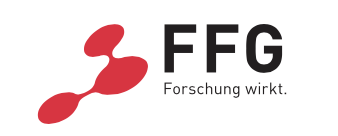- About us
- Research expertise
- DIGITAL – Institut für Digitale Technologien
- MATERIALS – Institut für Sensorik, Photonik und Fertigungstechnologien
- ROBOTICS – Institut für Robotik und Flexible Produktion
- COREMED – Zentrum für Regenerative Medizin und Präzisionsmedizin
- HEALTH – Institut für Biomedizinische Forschung und Technologien
- LIFE – Institut für Klima, Energiesysteme und Gesellschaft
- POLICIES – Institut für Wirtschafts-, Sozial und Innovationsforschung
- Business areas
- Products & services
- Research infrastructure
- Beteiligungen
- Career
- Aktuelles
- Publications
- Kontakt zu uns
WildWarn
RUNNING TIME:
09/2023
—
08/2025
Total project duration:
2 Years

The project
The aim is to create a prototypical risk map of a region in order to better analyse wildlife accidents statistically and to be able to better identify causal relationships between possible influencing factors and the occurrence of wildlife accidents.
Our activities in the project
The tasks of JR in this project range from the preparation of the data basis to the development of methods for the temporally dynamic recording of spatial criteria (e.g. condition of agricultural crops, characteristics of forest stands, etc.). In this context, temporally dynamic means that the results of land cover must be available at different times of wildlife accidents. JR is also responsible for semantic data fusion. This involves harmonising the information obtained from the various data sources (traffic, habitat, weather/climate, etc.) so that it can be merged during modelling.
Research groups
Downloads
Auftraggeber
Bundesministerium für Klimaschutz, Umwelt, Energie, Mobilität, Innovation und Technologie
vertreten durch die Österreichische Forschungsförderungsgesellschaft mbH (FFG)
Project partners
AIT Austrian Institute of Technology GmbH
Pentamap GmbH
WWN Forstner
Österreichische Bundesforste AG
Oberösterreichischer Landesjagdverband
Project details
There are currently around 300 wildlife accidents involving personal injury throughout Austria each year, with around 330 people injured and 1-2 killed. According to Statistics Austria, around 77,000 wild animals are killed in road traffic each year ("roadkill"). The aim of the project is to analyse high-risk sections of the road network where wildlife accidents occur more frequently, based on satellite image data. Dangerous sections are to be modelled spatially and temporally using a variety of different data sources, primarily satellite-based but also using data collected or available on the roadside, such as traffic volumes, speed levels, accident frequencies and road alignment parameters as well as accident-relevant habitat data. A data fusion to be implemented in this project is intended to generate added value from the earth observation data in order to obtain the best possible data-based understanding of wildlife accidents before they happen. The results are to be made available to various user groups (e.g. infrastructure operators, vehicle drivers), whereby integration into various applications is planned, ranging from navigation apps to comprehensive map-based visualisation of hazard zones. As a result of the project, a prototypical risk map of a region is to be modelled primarily on the basis of satellite image data and made available as a web-based service in order to better analyse wildlife accidents statistically and to be able to better show causal relationships between possible influencing factors and the occurrence of wildlife accidents in terms of space and time.
Projektbeteiligte
Related projects
SHAPING THE FUTURE, TOGETHER
JOANNEUM RESEARCH provides innovation and technology services in the field of applied research. As a research company working on behalf of various federal provinces and regions in Austria, our expertise shapes the development of our modern society and economy – sustainably, and always with a focus on people. As a multidisciplinary team working in a flexible set-up that fosters innovation, we always live up to the highest social and scientific standards.



